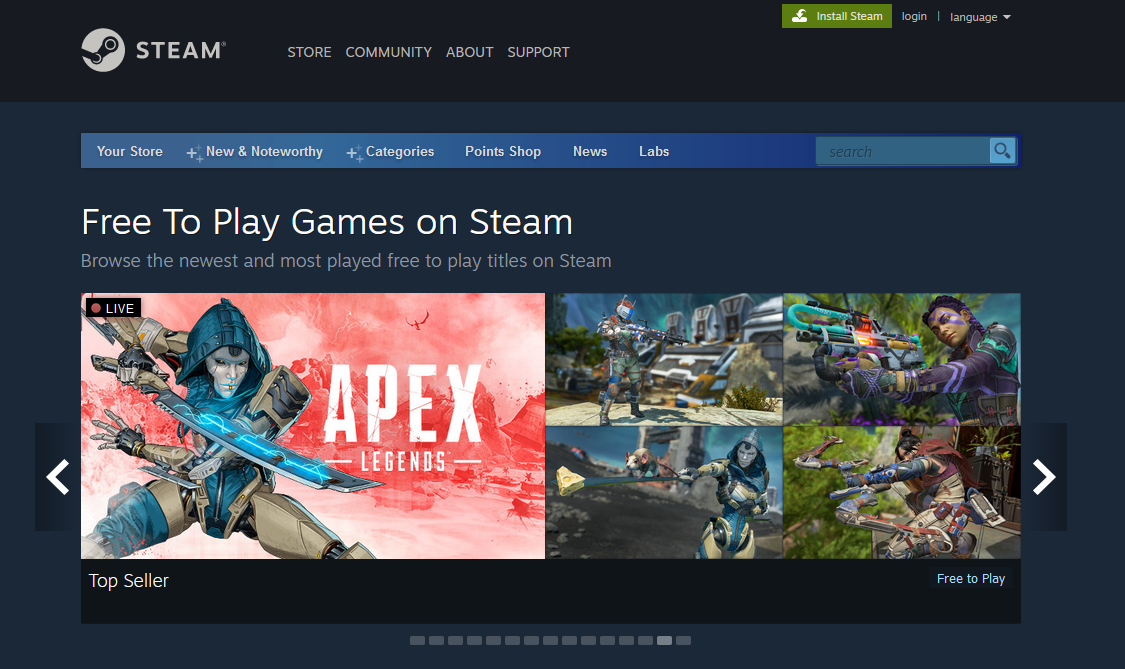What is Free to Play?
Since the early inception of games, regardless whether they be on a PC, console, or mobile device, developers have had many attempts at different types of monetization models. There has undeniably always been free to play games. It must be remembered that kids and adults were always made available with the ability to play games such as on websites which were often with advertisements and lack of depth. Things changed quite so through the years in early 2000. In the mid 2000’s world clamored on games such as World of Warcraft and NCSOFT Guild Wars which had utilized subscription or pay to own models. However, game titles such as RuneScape and Mu Online hit the net early as 2001 which were already pushing the foundations of online free to play multiplayer gaming.

During recent years the term “Free to Play” or “F2P” coined by gamers have subsequently time risen to popularity. One almost cannot go without diving onto an MMORPG or the like without coming across the terms “Free to Play” or even more notoriously the discussion on “Pay to Win”. Furthermore with games that fall under this category, it has become greatly evident that the “Free to Play” model is certainly here to stay.
Are F2P games really free though?
Accordingly as how the term sounds, free to play games often are free to “play”. The first thing to remember is that as can be seen with many areas of life, there is often no such thing as a free lunch. To illustrate this in simple terms. It is simply cause and effect. Since as long as developers for these gaming titles are not a non-profit organizations there must be something they stand to gain. While game developers release free to play games, they are often making available ways to bring in revenue from their games in the form of advertisements or the popular micro-transaction model. Hence it is like being the individual at the grocery free food sample table. You can technically have as many free samples as is available on the cart. However, these bite sized morsels won’t fill you up truly with how small and limited they might be. At this time you might be considering whether or not to just go for it and take that wallet out.

To begin with the idea of Free to Play in fact can be summarized as an ingenious marketing method. That is to say let’s ask ourselves what is the best way to gain exposure for non-AAA game company? Furthermore for companies such as these are often foreign developers without the same level of marketing available such as NCSOFT and Blizzard had in the US. Despite the difficulties of marketing and presence, Asian game makers such as Nexon, Tencent, and Netmarble, among many others, have gained significant popularity with their game titles throughout the years.
Though on one hand free to play games are vastly popularized in gaming today, on the other hand there is often discontent from various gamers in these audiences. Even more so this can be seen with the ever so popular mobile free to play market. The underlying design philosophy of many mobile game developers is that the direction and goals always undeniably leads to monetization. With this intention in mind, most developers focus on varying degrees of free to play micro-transaction styled monetization methods for what seems to be often short term cash grab type game-play that often has mechanics that motivates the players to spend. On the contrary it is less and less seen that there are developers that spend more time developing a mobile, console, or PC paid title as the resources required are often not worth the return values. This is more harshly evident with mobile game titles as a person may find themselves hard pressed to discover a quality multiplayer type game that does not have evident characteristics of free to play micro-transactions.
Are free to play games fun to play?
While it is true that most games these days fall under the free to play mantra, there are some that have enjoyment value. Nevertheless what may be deemed fun for one person may greatly differ from another. After all many individuals that has seen the changes that the gaming community has gone through over the years may have a different expectation than someone that may be growing up now through the sea of free to play gaming options that dominate the market.

Free to play can be quite fun depending on the game title and the types of offerings that the micro-transactions provide. Often even AAA game developers these days have micro-transactions. To point out a few, Apex Legends and Fortnite are for example among the top popular titles. Surprisingly these types of Free to Play games don’t primarily demand the players to be fully content or time progression locked like many mobile or free to play MMORPG type of games. Thus making a very fair experience that results in a more of the skill based game-play that is required. Of course that is not to say you would not want end up spending in these games. By all means who wouldn’t want to be dishing out some punishment to other players while dressing up in style like John Wick or having a laugh as a giant yellow banana?
The first thing to remember for all gamers is to just have fun. That’s what games are all about. For that reason every gamer should really ask themselves one question first before looking at what others say about how “Pay to Win” a game may or may not be. Does this game have enough core game-play mechanics that I can enjoy in the capacity that I would have fun with? Despite many Free to Play games having “Pay to Win” mechanics, where the player could progress much further and quicker by spending on micro-transactions, many gamers continue on with this in mind as a challenge for these games. They see that certain game developers will have long term content barriers that the Free to Play gamers will always often catch up to the big spenders on. This is also often the issue with which many players that have spend considerably would quit after some time as they realize the new content always will result in always needing to continue further. As well as the fact that often these games will have new content which nevertheless will also provide catch up mechanics for keeping some balance with the player-base.
You often hear stories of people who spend thousands or hundreds of thousands on these mobile game titles. It’s apparent that this monetization model and philosophy is here to stay. Now all things considered while these types of games that are heavily “Pay to Win” are popularized, there are at any rate just as many other fun options such as Apex Legends to enjoy. In fact there are also some small gems in the free to play titles which can be found on mobile devices even such as Asomibo’s Toram Online or others that players can enjoy.
What is considered “Pay to Win”?


